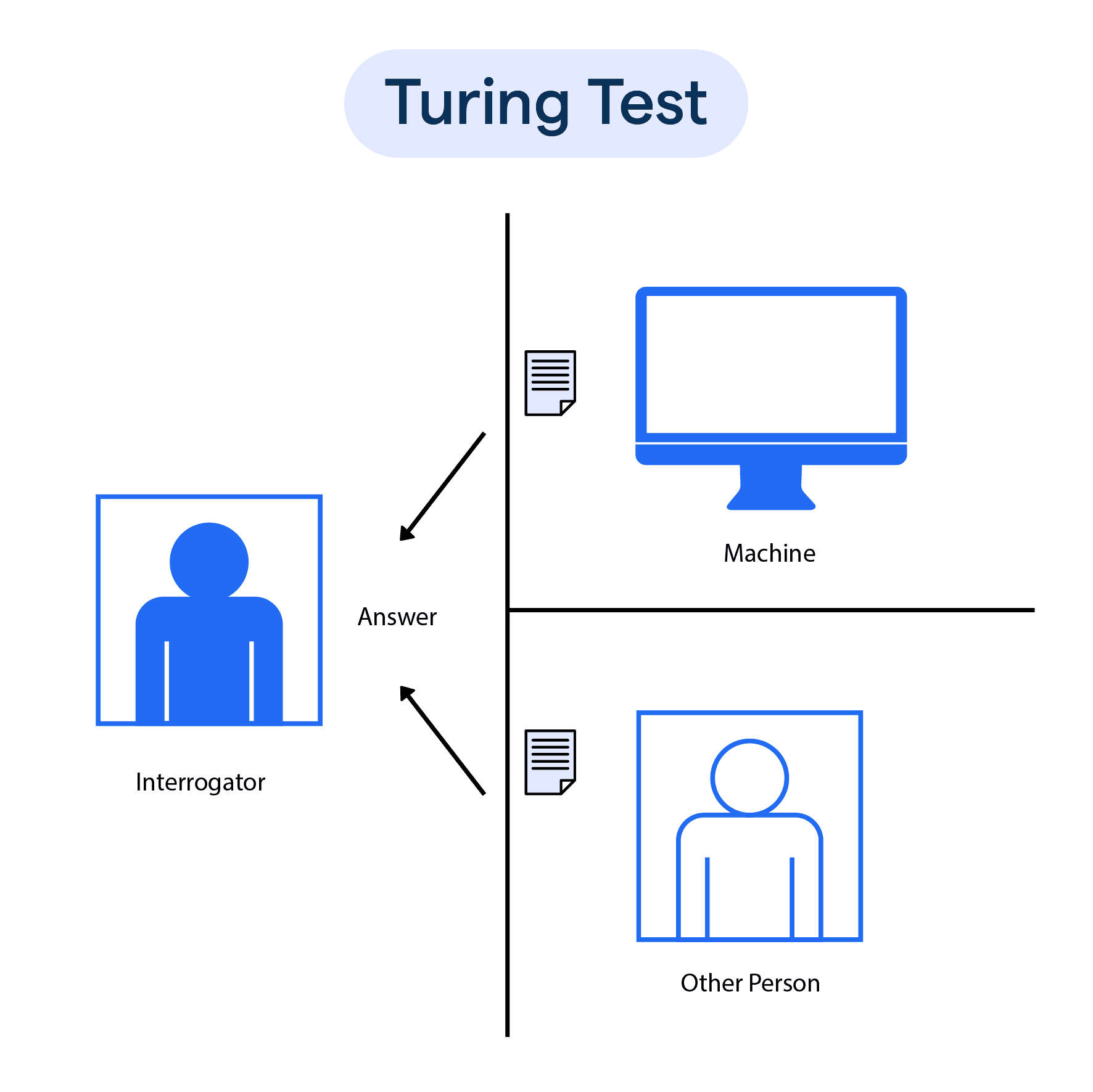The Turing Test is a concept proposed by British mathematician and computer scientist Alan Turing in 1950. It is designed to assess a machine's ability to exhibit intelligent behavior indistinguishable from that of a human. In his seminal paper, "Computing Machinery and Intelligence," Turing put forRead more
The Turing Test is a concept proposed by British mathematician and computer scientist Alan Turing in 1950. It is designed to assess a machine’s ability to exhibit intelligent behavior indistinguishable from that of a human. In his seminal paper, “Computing Machinery and Intelligence,” Turing put forward that a machine could be deemed intelligent if it could engage in a conversation with a human without the human realizing they were interacting with a machine.

The test involves a human evaluator who interacts with both a machine and a human through a text-based interface, without knowing which is which. The evaluator’s task is to determine which participant is the machine and which is the human based solely on the responses to questions posed. If the evaluator cannot reliably tell the difference between the machine and the human, the machine is said to have passed the Turing Test.
Turing’s idea was groundbreaking, as it shifted the focus from defining intelligence to evaluating observable behavior. Although the Turing Test has been a subject of much debate and criticism, it remains a foundational concept in the field of artificial intelligence, symbolizing the quest to create machines that can mimic human thought processes and interactions.
See less
Singularity Inside a Black Hole Definition: A singularity is a point inside a black hole where matter is crushed to an infinitely small space and gravity is extremely strong. Density: At the singularity, the density is so high that it’s beyond our current understanding—everything is packed into a tiRead more
Singularity Inside a Black Hole
- Definition: A singularity is a point inside a black hole where matter is crushed to an infinitely small space and gravity is extremely strong.
- Density: At the singularity, the density is so high that it’s beyond our current understanding—everything is packed into a tiny point.
- Gravity: The gravitational pull at the singularity is incredibly intense, so strong that not even light can escape, which is why we can’t see inside a black hole.
- Space and Time: According to Einstein’s theory of relativity, space and time become warped and behave differently at the singularity. The usual rules of physics don’t apply.
- Observation: We can’t directly observe a singularity because it’s hidden inside the black hole’s event horizon, the boundary beyond which nothing can escape.
- Theoretical Physics: Scientists are still trying to understand what happens at the singularity and how it fits into the broader picture of physics, especially how it might combine with quantum mechanics.
See less